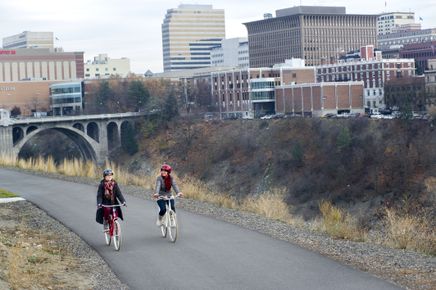Why adding more lanes doesn’t reduce traffic jams

This Sunday, we had an article in the paper about road diets and their increased use in the Inland Northwest. Unsurprisingly, some of the people who commented on the story were appalled that lanes were being reduced on some roads, appealing to city planners and engineers to leave the lanes alone.
This blog post from the Transportationist argues against the other side of the coin: road widening. Wes Marshall, its author, makes a case to keep roads skinny, showing that traffic congestion increases when lanes are added.
He says:
Once capacity increases, not only do you get the originally predicted traffic growth, but you also facilitate some often unanticipated changes in travel behavior. First, existing road users might change the time of day when they travel; instead of leaving at 5 AM to beat traffic, the newly widened road entices them to leave for work with everyone else. Second, those traveling a different route might switch and drive along the newly widened option. Third, those previously using other modes such as transit, walking, bicycling, or even carpooling may now decide to drive or drive alone instead. Together, these unwanted behavior changes fall under what is termed the theory of triple convergence (also known as the ‘Iron Law of Congestion’). This latent demand induces more traffic than originally expected and saps the supposed improvement of the expected benefits.
Put bluntly, adding lanes increases traffic. The question is, however, was the traffic "induced" as the above graph suggest, or was there latent demand for the road?
Some planners have said to me that "road diet" is an outdated term and "rightsizing" is preferred. But Marshall keeps the diet metaphor going by writing, "The joke is that adding lanes to cure congestion is like loosening your belt to cure obesity."
Should roads go on a diet? How about a traffic-eating binge?
